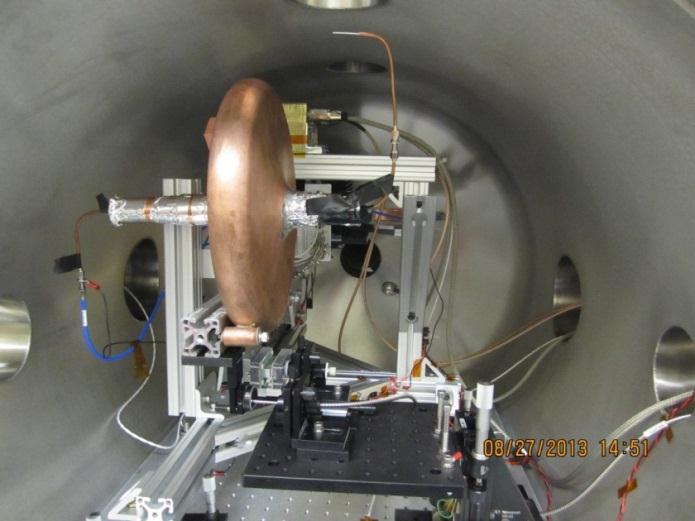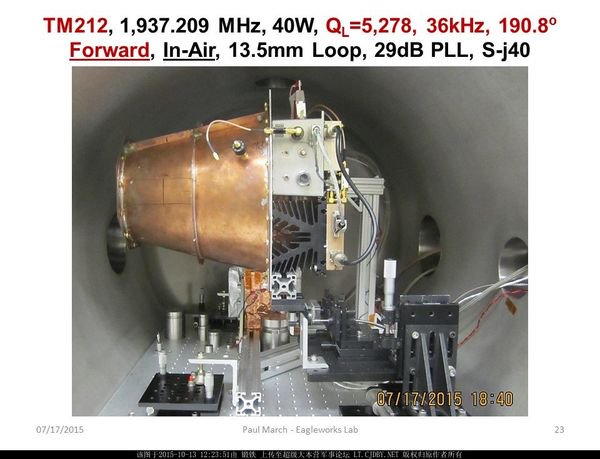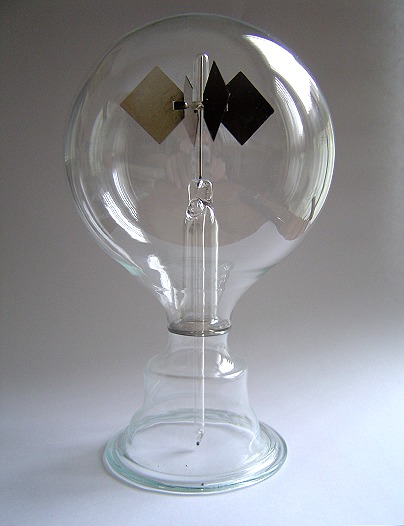|
Size: 6215
Comment:
|
Size: 6258
Comment:
|
| Deletions are marked like this. | Additions are marked like this. |
| Line 21: | Line 21: |
| I bet the much of the "anomalous thrust" would vanish if they were black. [[ https://phys.org/pdf333267680.pdf | NASA Goddard has done some interesting work on ultra-black, high emissivity surfaces ]]. | I bet the much of the "anomalous thrust" would vanish if the surfaces were black, better heat radiators, and colder. [[ https://phys.org/pdf333267680.pdf | NASA Goddard has done some interesting work on ultra-black, high emissivity surfaces ]]. |
Anomalous Thrust
Fringe space fans flock to dodgy research; learning physics and engineering in order to exploit the wonders of proven scientific phenomena is too much like work, I suppose.
One bit of dodgy research is "quantum vacuum plasma thrusters", promulgated by Harold White's group at NASA's Johnson Space Center in Houston Texas. There may be spooky new effects here, but their experiments are not nearly detailed or careful enough to actually measure them while ruling out more likely phenomena. Replication by other researchers, and variation of vacuum pressure, configuration, temperature, emissivity, and other experimental parameters are required to find out what the alleged "thrust" is influenced by.
A paper here: Anomalous Thrust Production from an RF Test Device Measured on a Low-Thrust Torsion Pendulum
Their test devices are shown here:
Device 1 |
Device 2 |
|
|
28 watts, diameter 11 inches ~= 14 cm radius |
40 watts? (17 W in abstract), estimated diameter 12 inches |
Estimated area 0.123 m2, 230 W/m² |
Distribution of heat uncertain, |
Shiny, estimated emissivity 0.1 |
Temperature probably similar |
230 = 0.1 * 4.567e-8 * ( T⁴ - (300K)⁴ ) |
|
⇒ T = 492K ≈ 220° C |
The devices will get very hot, emitting heat only by black body radiation, and thermal conduction to the rest of the apparatus (which will also get warm). Because the devices are shiny, their black body emissivity will be low; I'm guessing 10%. Note that Device 1 is anchored to the microwave source on the right; some heat will flow out the right side, so it will be colder than the left side.
I bet the much of the "anomalous thrust" would vanish if the surfaces were black, better heat radiators, and colder. NASA Goddard has done some interesting work on ultra-black, high emissivity surfaces.
The experimental setup is messy. Nice stainless steel pressure vessel, but filled with outgassing materials. The authors describe a setup with two turbopumps (no cryopump or cold trap mentioned) that requires a few days to pump down to 5e-6 torr, or about 7e-4 Pascals. That is a poor vacuum for days of pumping, so something is outgassing. If the pressure sensor is near the pumps, and outgassing sources are closer to the device, then the pressure could be significantly higher there; perhaps a 2e-3 Pascals (WAG). The pumps are running during the experiment; if the experiment was clean, that would not be necessary.
For comparison, the Large Hadron Collider (LHC) maintains a 3 kilometer ring (and lots of side experiments) at 1e-6 Pascals, and the Laser Interferometer Gravitational Observatory (LIGO) keeps two 4 kilometer long large-bore pipes pumped down to 1e-7 Pascals. I used high vacuum systems for sputter-depositing niobium to make Josephson junctions as a graduate student at UC Berkeley in the early 1970s; cleanliness was essential.
|
The device reminds me of a paddle in a Crooke's radiometer, also known as a light mill, another device with slightly more heat on one side than the other. A detailed explanation here. |
Modern hypersonic aerodynamics emerged from the work of Reynolds and Knudsen. The detailed quantitative understanding of radiometers led to the design of rockets and reentry vehicles that got us to the Moon and Mars.
Handwaving "explanations" natter about "softening spacetime" so it can be "warped", somehow escaping general relativity. However, LIGO detects black hole mergers that briefly emit power levels of 3e49 Watts of gravitational energy, and follow Einstein's general relativity equation exactly; that is as "warped" as spacetime gets. 28 watts compared to 3e49 watts is like a flea fart (a few picowatts?) compared to a supernova (5e36 watts).
It is amusing to compare this work to the Alcubierre warp drive, which reads like an intentional satire of FTL ideas ( "... Of course, in the region where r s ≃ R the tidal forces can be very large indeed ..."). All that is needed for an Alcubierre warp drive is universe-sized accumulations of "negative mass-energy", which makes black hole mergers seem like a flea fart. I suspect Dr. Alcubierre enjoys agitating idiots.
If you want to go to the stars, digitize yourself and send the information at the speed of light, to be reconstructed at the far end by nanomachines you sent out beforehand. We are made of star ejecta, carbon and hydrogen and oxygen and nitrogen, abundantly available throughout the galaxy. However we choose to tour the galaxy, ultra-long lifetimes require rebuilding our brains from the atoms up. We don't need to bring our decaying meat puppets with us.
Perhaps I am wrong, and there is a real "quantum thrust" effect here that will get us to the stars, but my guess is that the Johnson Space Center is struggling for existence now that they cannot put Americans into space, and is grasping at any straw for publicity and funding. Goddard puts telescopes in space, and JPL puts landers on Mars; perhaps it is time to concentrate US space expenditures there.



